Abstract
An enzyme immunoassay (EIA) in which an immunoglobulin A monoclonal antibody from a myeloma (MOPC 467) is used was developed to detect the presence of Salmonella organisms. This myeloma protein binds to a flagellar determinant of the organisms but is not directed toward the H antigens. Of 100 strains tested, 94% were detectable with this antibody. The EIA, used with MOPC 467, is quick, sensitive, and specific, showing virtually no cross-reactivity to other enteric organisms. Initial screening of antibody reactivity was performed by Ouchterlony gel diffusion with the supernatants of heat-treated Salmonella cultures. After this, an EIA was performed on the heat extracts with the myeloma protein, which had been directly coupled to alkaline phosphatase. A positive reaction was indicated by the production of a yellow color after the addition of a substrate (p-nitrophenylphosphate), and this was quantitated by determining the absorbance at 405 nm. The EIA proved to be slightly more sensitive than the Ouchterlony analysis. The sensitivity of the EIA is such that as few as 10(6) Salmonella organisms per ml were detected. This concentration was easily obtained after a 24-h preenrichment incubation of the sample. Mixtures of Salmonella strains with a 10 x concentration of Escherichia coli did not prevent detection of the Salmonella strains. This EIA can be successfully used to detect contamination of foods, as it was used to detect the intentional contamination of infant formula in these studies. Indications are that the EIA is sensitive enough to detect Salmonella strains in M broth subcultures taken directly from a preenrichment culture. Testing of samples could thus be completed 36 h after culture initiation, rather than after 96 h, the time currently needed.
Full text
PDF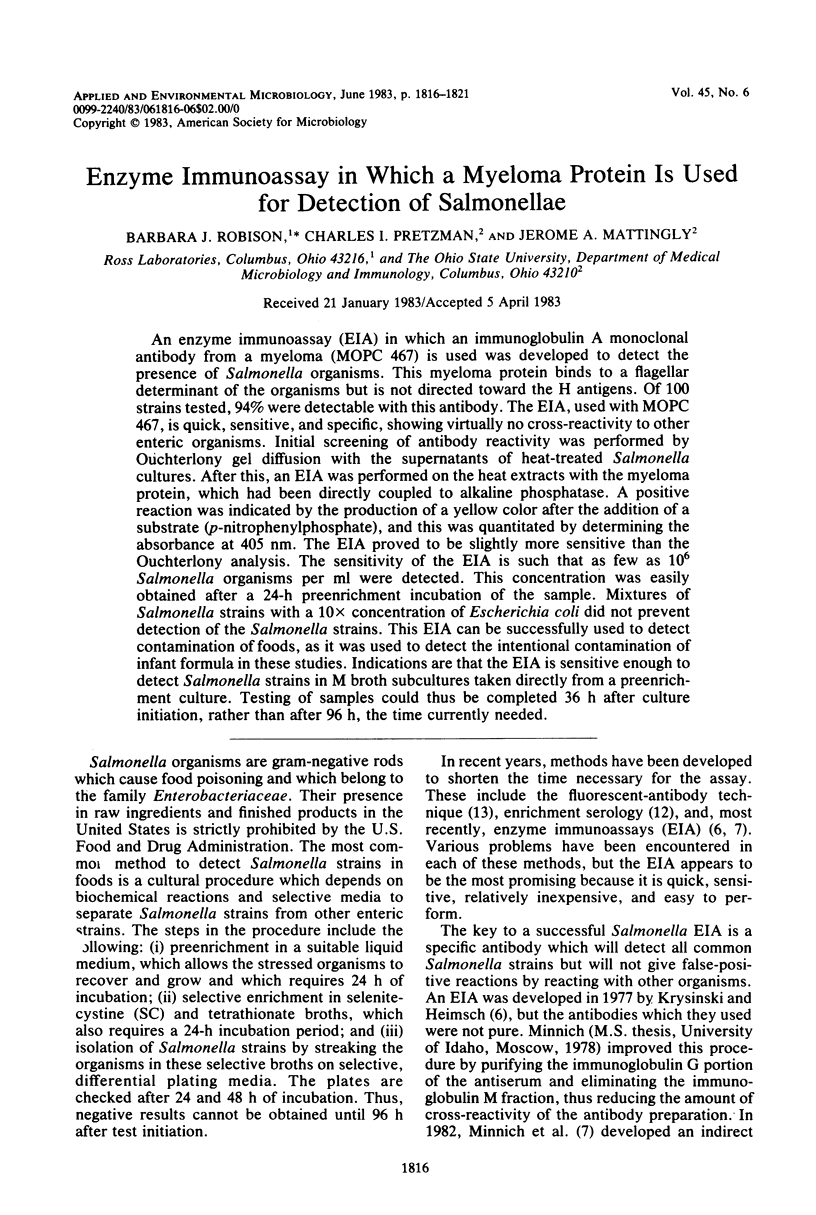
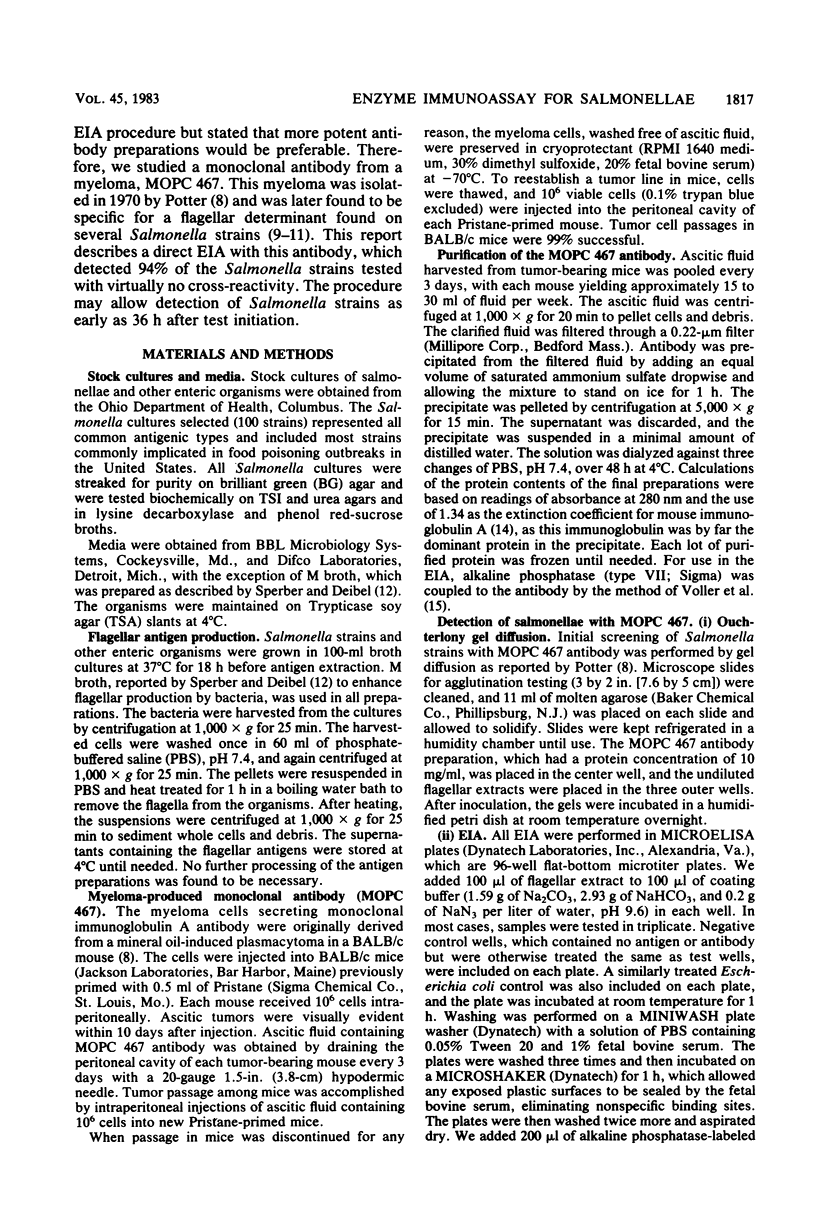
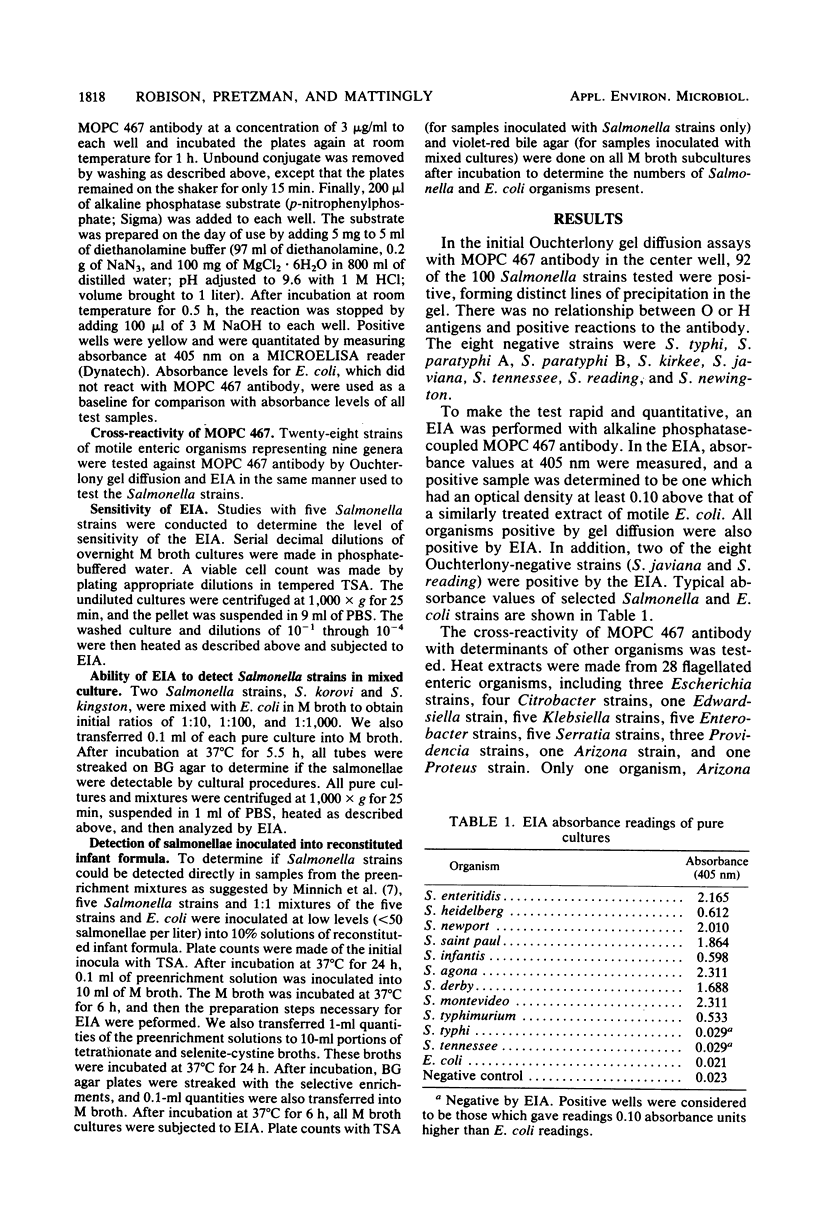
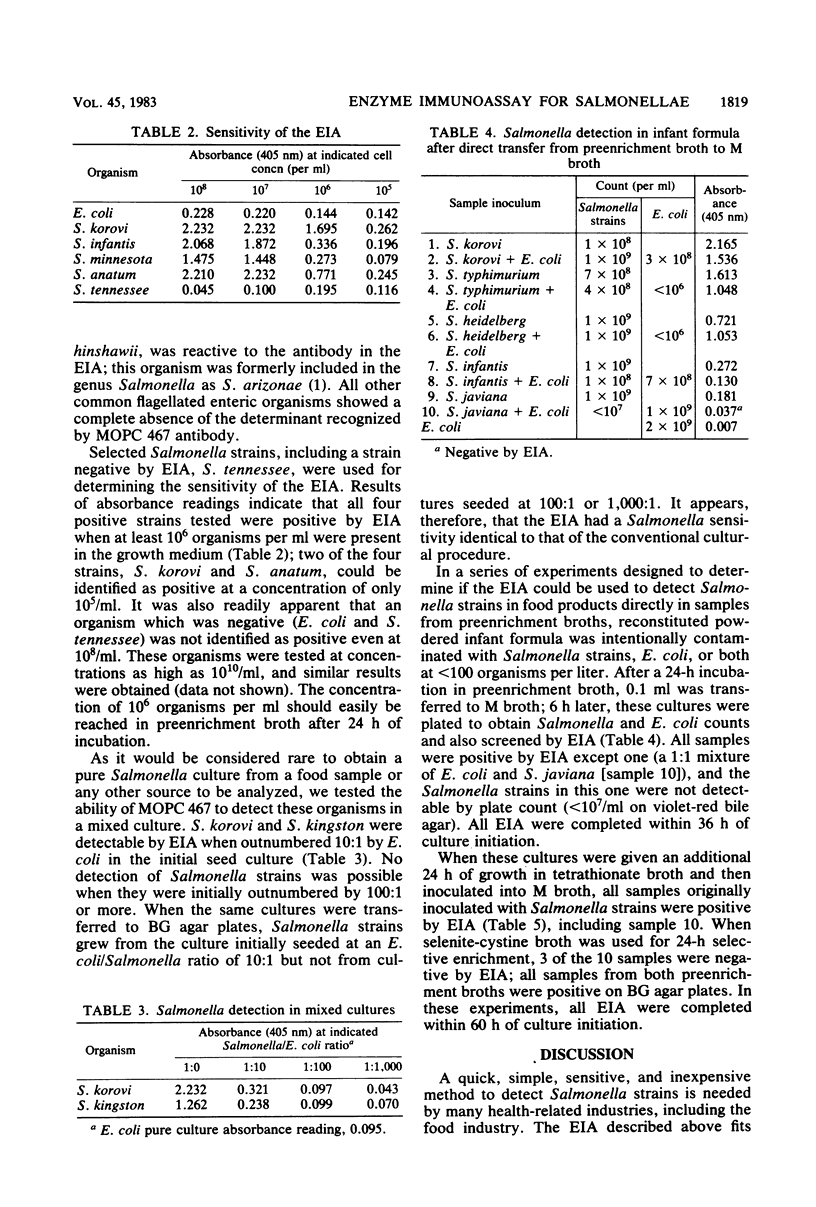
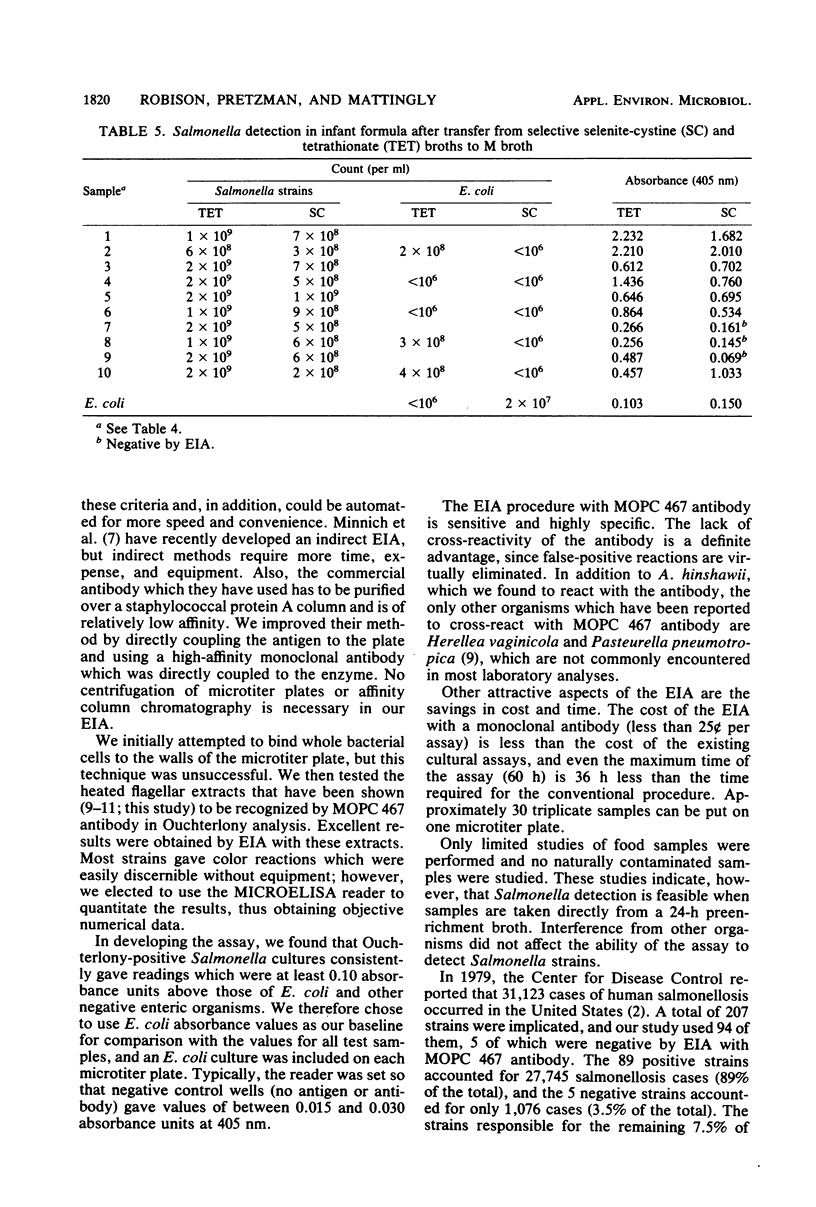
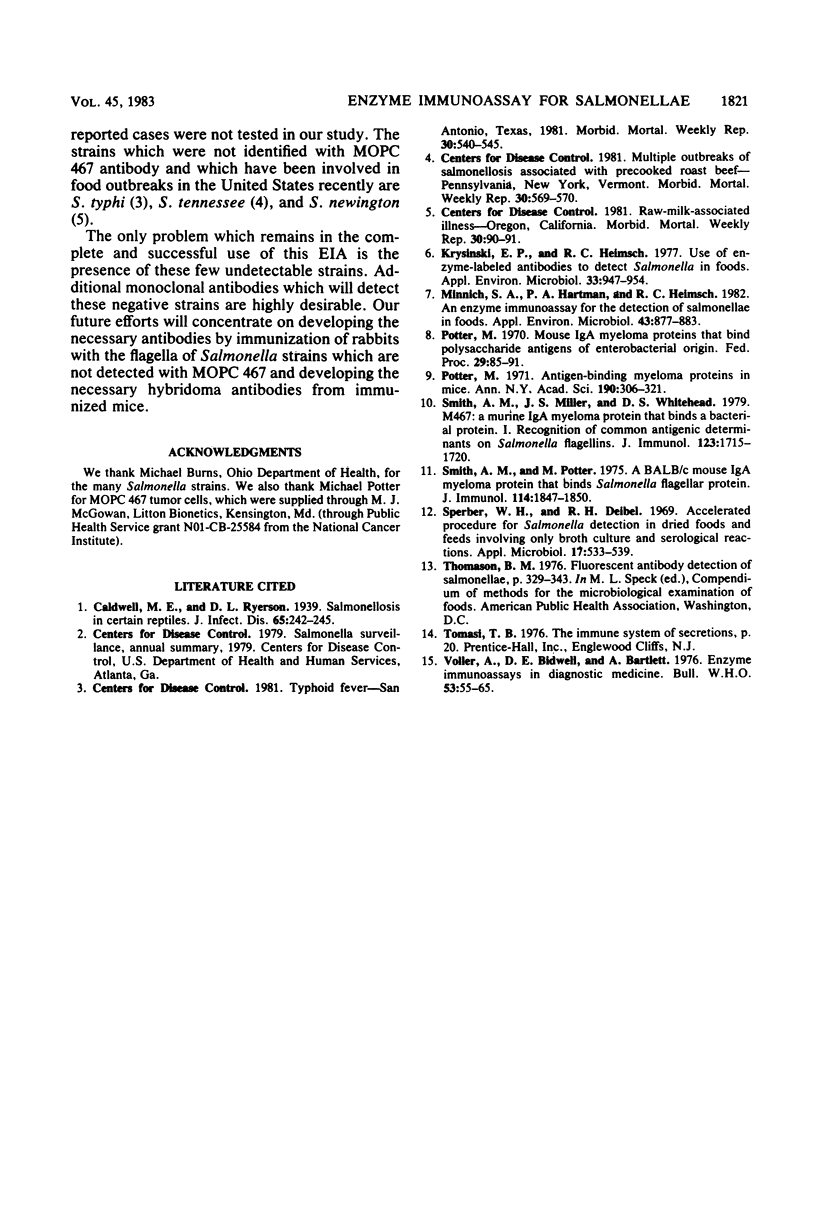
Selected References
These references are in PubMed. This may not be the complete list of references from this article.
- Krysinski E. P., Heimsch R. C. Use of enzyme-labeled antibodies to detect Salmonella in foods. Appl Environ Microbiol. 1977 Apr;33(4):947–954. doi: 10.1128/aem.33.4.947-954.1977. [DOI] [PMC free article] [PubMed] [Google Scholar]
- Potter M. Antigen-binding myeloma proteins in mice. Ann N Y Acad Sci. 1971 Dec 31;190:306–321. doi: 10.1111/j.1749-6632.1971.tb13543.x. [DOI] [PubMed] [Google Scholar]
- Potter M. Experimental approaches to homogenous antibody populations. Mouse IgA myeloma proteins that bind polysaccharide antigens of enterobacterial origin. Fed Proc. 1970 Jan-Feb;29(1):85–91. [PubMed] [Google Scholar]
- Smith A. M., Miller J. S., Whitehead D. S. M467: a murine IgA myeloma protein that binds a bacterial protein. I. Recognition of common antigenic determinants on Salmonella flagellins. J Immunol. 1979 Oct;123(4):1715–1720. [PubMed] [Google Scholar]
- Smith A. M., Potter M. A BALB/c mouse IgA myeloma protein that binds salmonella flagellar protein. J Immunol. 1975 Jun;114(6):1847–1850. [PubMed] [Google Scholar]
- Sperber W. H., Deibel R. H. Accelerated procedure for Salmonella detection in dried foods and feeds involving only borth cultures and serological reactions. Appl Microbiol. 1969 Apr;17(4):533–539. doi: 10.1128/am.17.4.533-539.1969. [DOI] [PMC free article] [PubMed] [Google Scholar]
- Voller A., Bidwell D. E., Bartlett A. Enzyme immunoassays in diagnostic medicine. Theory and practice. Bull World Health Organ. 1976;53(1):55–65. [PMC free article] [PubMed] [Google Scholar]


